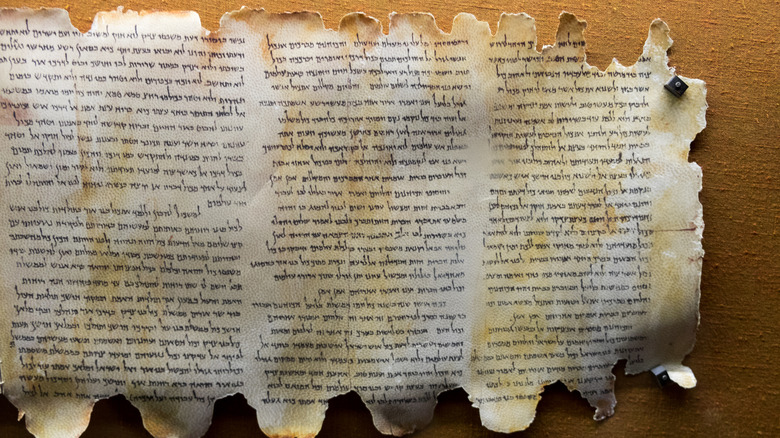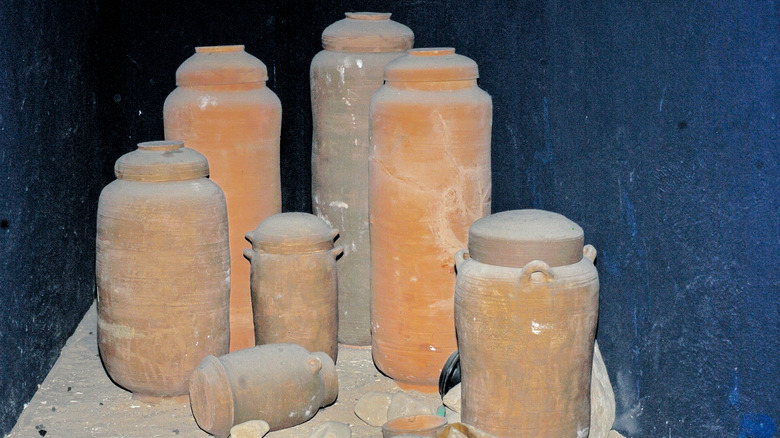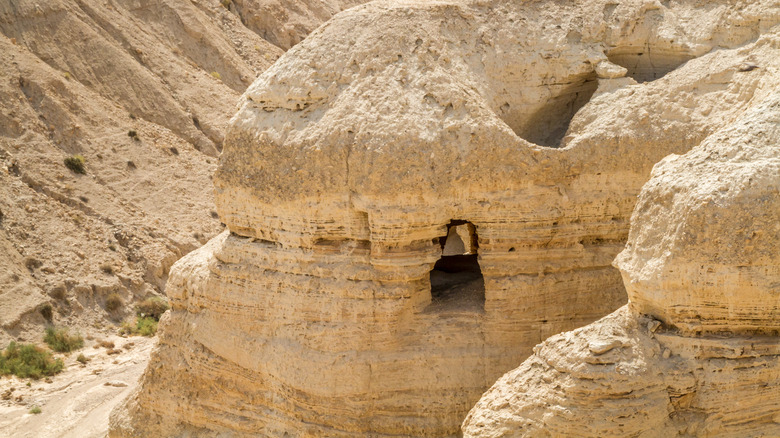Here's How The Dead Sea Scrolls Were Discovered
The Dead Sea scrolls were discovered over 70 years ago in the Qumran Caves in a series of events that sound like they're straight out of an Indiana Jones movie. As a collection, the scrolls constitute the oldest copies of biblical books ever found — but they are also much more than that. The leather scrolls contain a number of additional manuscripts written in Hebrew, Aramaic, and Greek and dating back to the 3rd century B.C. (via The World).
As a whole, the 900 manuscripts and over 15,000 fragments that make up the Dead Sea scrolls are also the written history of a local Jewish group, including descriptions of their local customs, laws, and conflicts with other groups, according to Smithsonian Magazine.
Although the manuscripts remained undiscovered for over 2000 years until found in the 1940s, there's at least a chance they weren't purposely hidden. As Smithsonian Magazine points out, storing scrolls in urns and jars was a traditional way of preserving manuscripts back then.
Even more important, the area where the Qumran ruins stand today was once a thriving trade point stop for local merchants. So rather than imagining the local scribe marching into the desert to hide the scrolls, it's more likely that they simply produced and stored the documents right where they lived and traded. As their civilization grew and moved on, the scrolls were simply left behind — maybe forgotten, maybe safeguarded in obscurity in the mighty caves.
The first Dead Sea Scrolls were accidentally discovered in 1947
The scrolls had been hidden in an area near the Dead Sea that was then part of Jordan and now falls within the Israeli-occupied West Bank (per The World). According to The World, the initial discovery was made by a Bedouin shepherd, who followed one of his goats into a cave and stumbled upon a number of terracotta jars containing seven leather scrolls. This would eventually become known as Cave 1, as 10 other caves containing scrolls were discovered over the following few years.
By 1948, the original scrolls had made their way to both the Hebrew University and the Metropolitan of the Syrian Orthodox Church in East Jerusalem, and the buzz about them was everywhere. Still, scholars and explorers were having a hard time locating Cave 1 again, and social and political unrest in the area just added to the difficulties. It wasn't until early 1949 that the cave was "rediscovered" along with additional scroll fragments and a number of artifacts, according to the book The Bible and the Dead Sea Scrolls.
After finding Cave 1 again, the rest of the caves were easier to find
Clustered within a relatively small area of just a few kilometers, the rest of the caves revealed not only fragments of more manuscripts, but also inkwells that could've belonged to scribes, tefillin cases, and jars. For decades after, no other caves were found — until in 2017 archeologists announced the discovery of a mostly empty Cave 12, which seemed to have been looted half a century earlier (per The Bible and the Dead Sea Scrolls).
Then in March 2021, Israeli archeologists found additional scroll fragments after rappelling into the "Cave of Horror" — so named because over 40 ancient skeletons were found within during excavations in the 1960s, according to The Guardian. Archaeological excavations of nearby caves also revealed a basket believed to be over 10,000 years old, the remains of a child that are at least 6,000 years old, and numerous coins and arrowheads dating back to the Bar Kochba revolt period circa 132–136 A.D.


